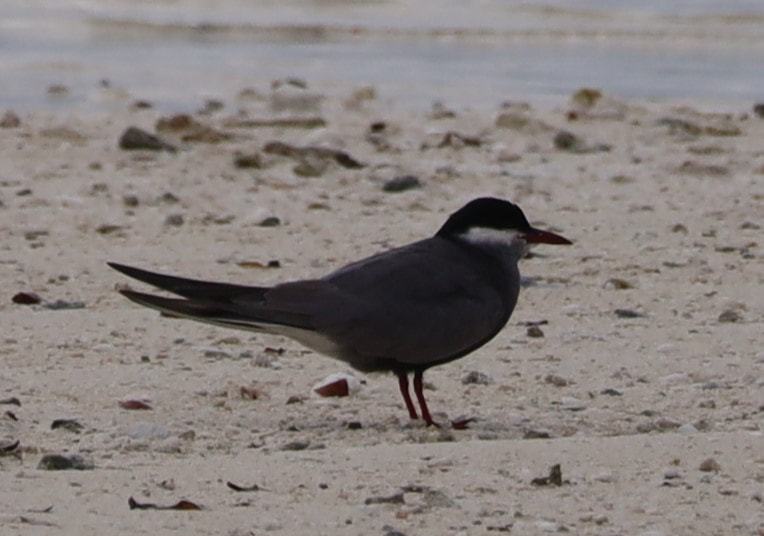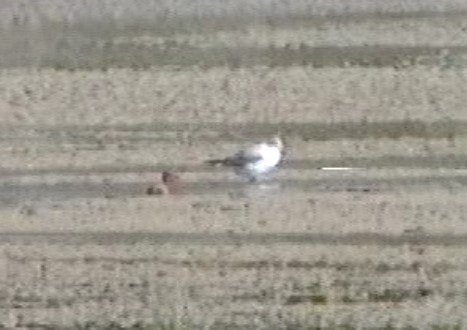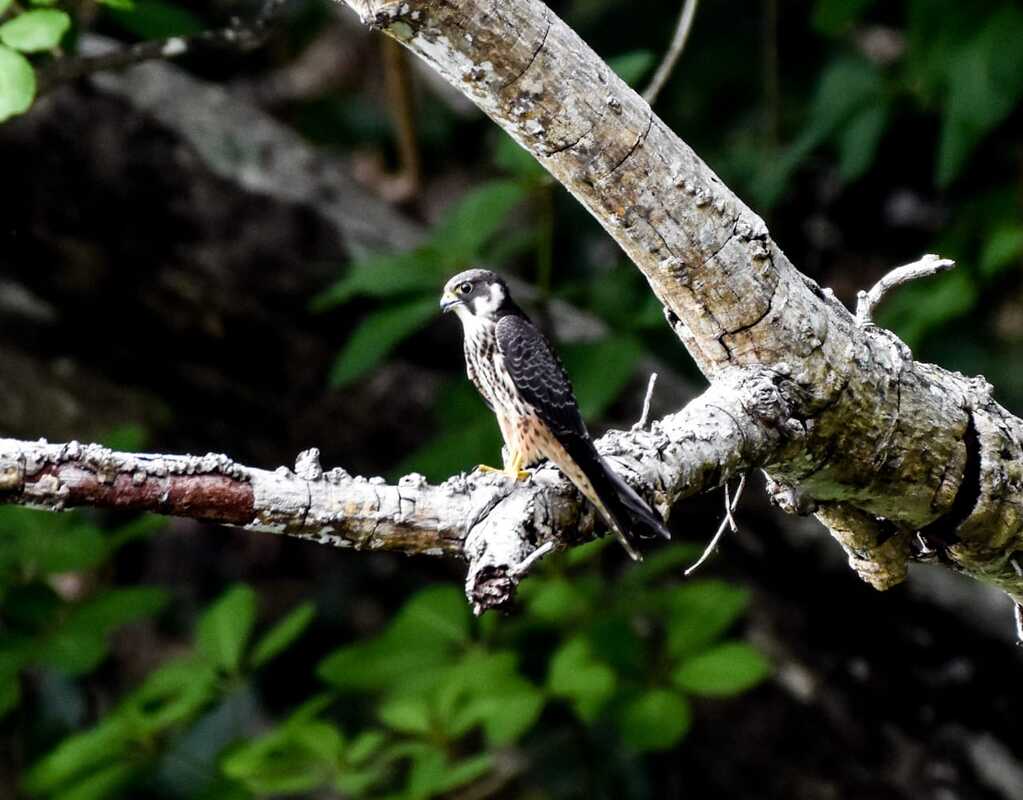|
|
Kaeleah Andrew has reported a Whiskered Tern in breeding plumage at Point Dot, Alphonse on 11 December 2023. The nominate race of Whiskered Tern breeds across much of southern Eurasia, Eastern European birds winter mostly in East Africa, with a few in the southern Middle East. Therefore, this must be a potential vagrant to Seychelles. However, it would be surprising to see a Eurasian bird in full breeding plumage in December. Race delalandii breeds in Madagascar, southern Africa and east Africa. This is the darkest race and indeed the plumage of this bird is very dark, perhaps exaggerated to some extent by the exposure. This race has a small white cheek. Peak laying in Madagascar is November. SBRC has accepted nine previous records.
0 Comments
Steve Agricole discovered a Squacco Heron at Ton Mark's, Northeast Point, Mahe on 11 November 2023, while giving a birding tour to two visitors from the cruiseship Zuiderdam. He called Adrian Skerrett who came to see it and take photographs. SBRC has accepted 21 previous records. The bird was still present when Steve visited again on 20 November.
Dr Girish Medon has reported a Glossy Ibis at Coetivy, present on 1 November 2023, present since 25 October. The sighting followed a heavy storm during the early hours of the morning. The bird was seen for nearly two hours near a temporary rain pool close to the shrimp farm, alongside some Grey Herons and Grey Francolins. Later it was seen near the middle of the island being chased by Fairy Terns.
This is the first report of any vagrant species from the island of Coetivy. On a scoping trip to Assomption on behalf of Island Conservation Society, Greg Berke reported a Caspian Tern seen on 11 September 2023 flying and the following day on the south west coast..
Caspian Tern is the rarest resident bird species of Seychelles. Until recently, the only known breeding site was at Aldabra, where up to 10 pairs nest, mainly on Iles Moustiques. This was the only oceanic breeding side in the world for the species.. Then in May 2023, Island Conservation Society staff at Cosmoledo recorded the first breeding record from outside of Aldabra at Menai. This is the first record of this species from Assomption. Graeme Risdon has submitted to SBRC a record form with supporting photographs (above) of a Grey-headed Gull Chroicocephalus cirrocephalus at Victoria harbour, on 19 February and again on 26 February 1995.
There have been no confirmed Seychelles records of this species to date. There is a published report from Farquhar that pre-dates the formation of SBRC, but unfortunately, details could not be traced. for confirmation. Also, SBRC has accepted 6 records as indeterminate between Black-headed Gull C. ridibundus, Brown-headed Gull C. brunnicephalus and Grey-headed Gull. Nikita Pothin and Annabelle Cupidon have reported a Wattled Starling at Aldabra on 1-2 May 2023. SBRC has accepted 7 previous records including 4 from Aldabra.
Three Glossy Ibis Plegadis falcinellus have been reported from North island, Farquhar by the island Conservation society team: Annie Gendron, Elena Levorato and William McNeely. The birds have been present since mid-March. SBRC has accepted 12 previous records, all of them in the inner islands. This is the first report west and south of Mahe.
SBRC has recorded many remarkable records over the years. A contender for the most remarkable ever is a report of an American Purple Gallinule Porphyrio martinica at North-east Point in September 2022. The bird was seen and photographed by Francis Godley. The record has now been accepted by SBRC as not only the first for Seychelles, but the first for the Indian Ocean and the most easterly record for this species.
American Purple Gallinule breeds in USA and Mexico and is a partial migrant south to Brasil, Argentina, and Paraguay, It is a vagrant to the Atlantic islands of St. Helena and Ascension and has reached the African coast. But what on earth was one doing in Seychelles? Steve Agricole has reported a Eurasian Hobby at Northeast Point on Mahe.
SBRC has accepted 34 previous records of this species. Lesser Noddies breed on rat-free protected islands of Seychelles, especially in the granitic islands where there are major colonies at Aride, Fregate, Cousin and Cousine. The species is also a non-breeding visitor to Maldives in significant numbers, but hitherto the origin of Maldivian birds has remained a mystery. Under a GEF Small Grants Programme in Maldives supported by the UNDP, NGO FC Frigator from Haa Alif Hoarafushi Island is undertaking a conservation initiative at roost sites in Ihavandhippolhu Atoll. This involves tracking the migration of the birds via satellite transmitters to identify breeding colonies. A total of eight Lesser Noddies have been tagged to date.
One of the Lesser Noddies tagged in Gallandhoo Island by FC Frigator on March 25, 2022, left Maldives on April 2, to arrive on Cousine Island, Seychelles on April 10. That is a distance of 2,400 km in 8 days at an an average speed of 12.5 kph! To learn more about this conservation programme click on: The Flight of the Sea Birds by UNDP Maldives - Exposure |
AuthorAdrian Skerrett Categories |












 RSS Feed
RSS Feed
